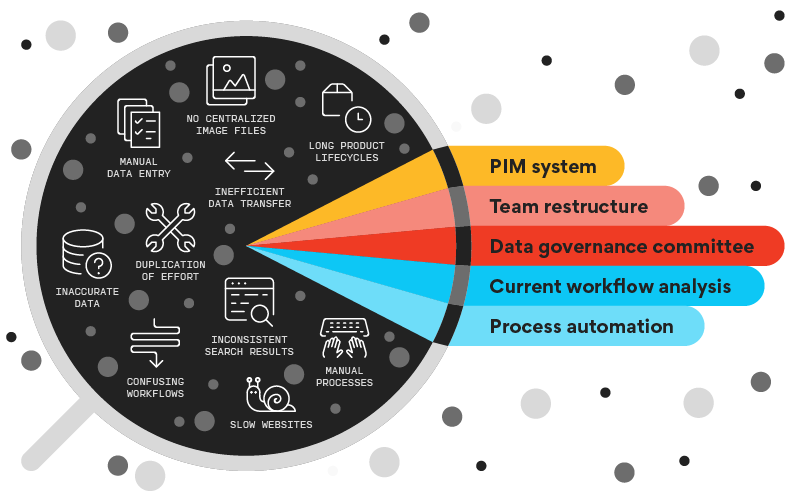When consulting detective Sherlock Holmes is tasked with solving a crime, he analyzes clues that are often invisible to others to identify the culprit and hand them over to Scotland Yard. He then returns to his home on 221B Baker Street to enjoy a peaceful evening with his pipe, satisfied with a job well done.
Ntara’s solutions architects operate in much the same way. We function as consulting detectives who take on cases, follow all available clues, and reach a conclusion. But the story doesn’t end when the offender is identified. Unlike Sherlock, our solutions architects keep working until the client’s problem is fully and optimally resolved.
What does a solutions architect do?
Solutions architects focus on saving our clients time, money, and effort. Some of the costly problems they solve for our clients include:
- Time-consuming manual data entry
- Broken web pages or slow websites
- Inconsistent search results
- Duplication of efforts
- Long product lifecycles
- Inaccurate data
- Confusing and chaotic workflows
- No centralization of image files
- Inefficient data transfer processes between systems
- Manual processes between systems
To fix these problems, a solutions architect may recommend one or more solutions, such as a product information management (PIM) system, a team restructure, a data governance committee, analysis of current workflows, or an automated process. We can create custom tools to identify problems and create custom solutions to solve them.

Technical background with specialized experience
Our solutions architects typically have backgrounds in engineering and work as part of our business analysis or engineering teams. Ntara’s solutions architects have years of experience that span design, programming, databases, IT hardware, analytics, and more. We work together to identify risk points and develop informed solutions that enhance your business’s efficiency.
The architecting process
With any project, we begin by gathering business requirements and conducting interviews with key stakeholders to identify major pain points. From there, solutions architects work with business analysts to create an architecture map of your existing systems, showing how data flows through them. We study that information to assemble a new map, showing a simplified solution that will help your business run more efficiently.
If you have existing documentation or diagrams, we’ll want to see that, too. If you don’t have them, don’t worry—we’ll create new ones using what we learn from you. (And you’ll have that documentation to work from for years to come.)
We will need to access your product or website data and identify where it comes from, where you send it, and what regulations or requirements exist.
We will likely want to audit your digital ecosystem or your website code to identify the efficacy and efficiency of your current setup. We may also examine your product lifecycle to identify ways to get your products to market faster.
We will need to fully understand your internal team workflow, including your product processes, approvals, IT, and more. If you have legal teams, regulatory teams, marketing teams, or others who need to provide input on your current workflows, we’ll talk to them, too.
A solutions architect wants as much information as possible to assess your current systems and processes and recommend a more optimized approach.
Architecting solutions that save time and money
Digital solutions come in different forms. Sometimes it’s a new process or system. Sometimes it’s new lines of code to automate specific processes. A solutions architect specializes in identifying the best solution for your business needs.
For example, if your company is currently managing product data in disparate systems, a solutions architect may recommend a centralized product information management (PIM) platform. We might recommend new ways to integrate current systems, or possibly remove a platform from your ecosystem altogether.
If you already have all the systems you need in place, we can identify any unnecessary steps in your processes. If you’re manually generating reports, we can suggest ways to automate them, freeing you up to spend your time on more important tasks.
The value to your business
The solution architect’s goal is to make life easier for internal teams and end customers. We do this by designing solutions that address your specific goals and improve internal efficiency.
Ntara has had solutions architects on our staff for more than a decade. When we collaborate across departments within your organization, we can uncover profitable efficiency opportunities. When needed, we can work with our development teams to develop custom software that identifies or addresses any issues.
Our team of solutions architects are continually adding more tools to our toolbox with each new problem we solve. If you’d like us to apply that knowledge to your business, get in touch.